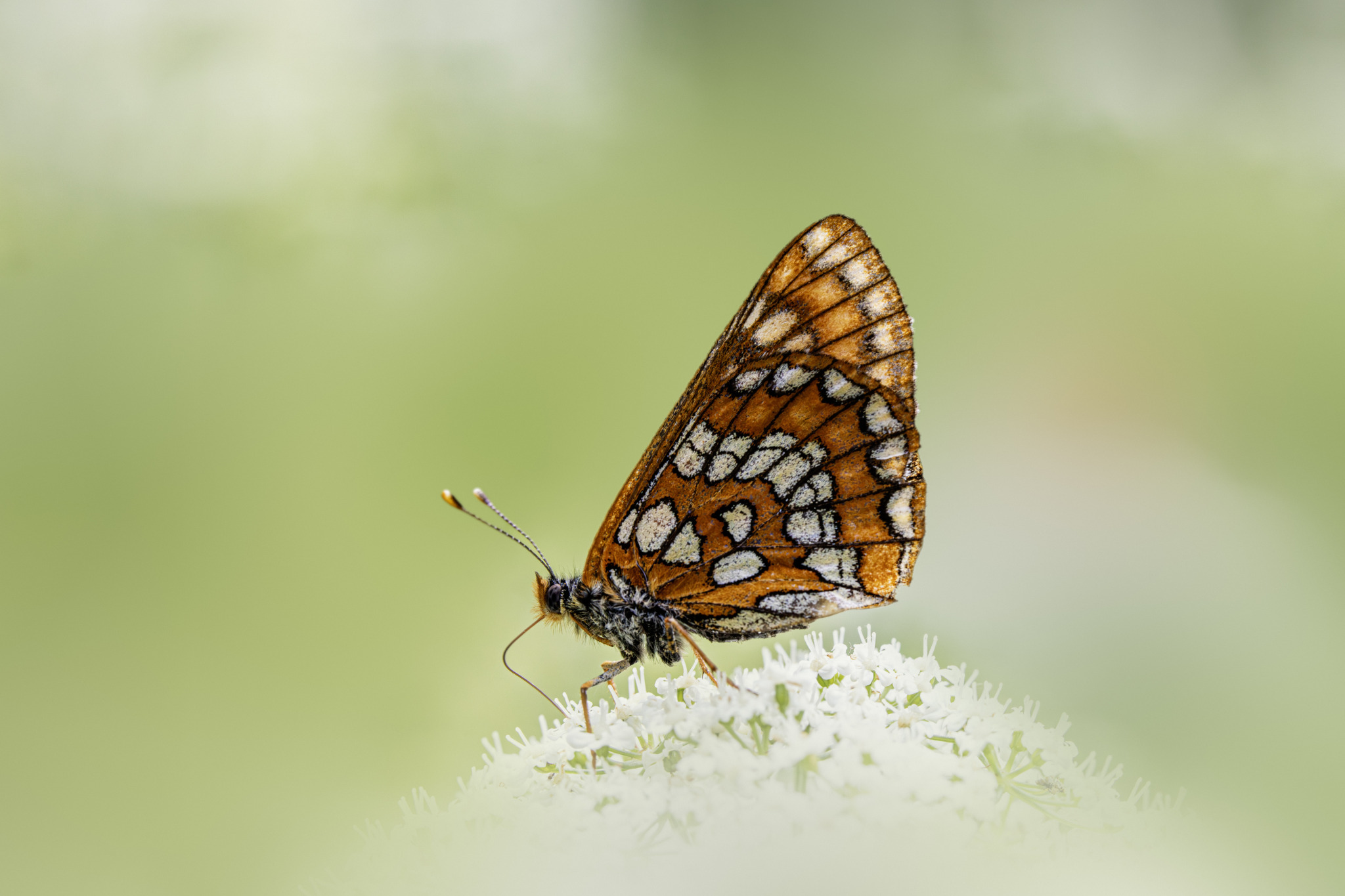The Lesser Marbled Fritillary (Brenthis ino) is a medium-sized butterfly in the family Nymphalidae. Known for its intricately patterned wings and preference for wet meadows and forest edges, this species is widespread across Europe and parts of Asia. Its delicate beauty and connection to specific habitats make it a fascinating member of the fritillary group.
Physical Description
- Wingspan:
- 38–48 mm (1.5–1.9 inches).
- Coloration:
- Upper Side: Bright orange with black spots and wavy lines, creating a striking mosaic pattern.
- Underside: Light brown to creamy-yellow with pale marbling and silver spots, giving it a subtle yet elegant appearance.
- Shape:
- Rounded wings with scalloped edges, typical of fritillaries.
Behavior
- Feeding:
- Adults feed on nectar from a variety of flowers, including thistles, knapweed, and brambles.
- Flight Period:
- Active from June to August, depending on location and altitude.
- Activity:
- Often seen basking in sunny spots or fluttering low over vegetation.
- Mating:
- Males patrol for females in open habitats, engaging in intricate courtship displays.
Habitat
- Found in a variety of damp and open habitats, including:
- Wet meadows and marshes.
- Woodland clearings and edges.
- Riverbanks and swampy areas.
- Prefers areas with abundant nectar sources and host plants for its larvae.
Life Cycle
- Eggs:
- Laid singly on or near host plants, such as meadowsweet (Filipendula ulmaria) or raspberry (Rubus idaeus).
- Larvae:
- Black with small white or yellowish markings and covered in short spines.
- Feed on the leaves of host plants and overwinter in leaf litter.
- Pupae:
- Form a compact chrysalis, usually suspended among vegetation.
- Adults:
- Emerge in early summer, completing their life cycle.
Distribution
- Found across much of Europe, extending eastward into Asia, including Siberia.
- Populations are more concentrated in temperate and boreal regions, especially in moist, low-intensity agricultural landscapes.
Conservation Status
- Generally considered of Least Concern, though some local populations may be threatened by:
- Habitat destruction due to drainage of wetlands and agricultural intensification.
- Loss of host plants in managed landscapes.
- Conservation efforts focus on preserving wetland habitats and promoting traditional land management practices.
Ecological Role
- Pollination:
- Adults help pollinate a variety of wildflowers.
- Prey Species:
- Serves as a food source for birds, spiders, and other predators.
Interesting Facts
- Wing Patterns:
- The marbled patterns on the underside help camouflage the butterfly when at rest.
- Larval Adaptations:
- The overwintering larvae are hardy and can survive cold temperatures by seeking shelter in leaf litter.
- Species Group:
- Despite its name, it is distinct from the true Argynnis fritillaries but shares similar habitats and behaviors.
Summary
The Lesser Marbled Fritillary (Brenthis ino) is a vibrant and ecologically important butterfly, often found in moist meadows and woodland fringes. Its striking coloration, intriguing life cycle, and role as a pollinator highlight its value in natural ecosystems. Protecting its habitats ensures the survival of this beautiful species for future generations to enjoy.
Views: 528
Subscribe to the newsletter:
